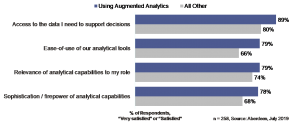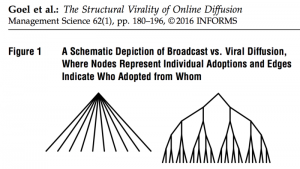— February 1, 2019

insspirito / Pixabay
Nowadays, a good salary and decent bonus package are just the beginning of employee recruitment. With millennials entering the workforce, its workers are demanding more than just good pay; they want a good schedule too, with flexible work options that include remote working as well as unique technology benefits that make their jobs less mundane. So, how can technology help employers attract and retain the best talent? A hint: AI can help, and here’s how.
Eliminating Mundane Work
Chatbots are transforming customer service by automating repetitive predictable interactions so that call center agents can focus on more challenging requests. Routine questions, from something as simple as changing a password, to helping customers return products, and even finding a replacement item that’s suitable for that product, can be handled by chatbots. They can also initiate conversations to promote offers or update customers about the latest products. When questions go beyond their predefined scope, chatbots can refer to live agents, so employees have the satisfaction of handling only the more interesting and challenging inquiries.
Chatbots are also taking over many of the repetitive predictable bookkeeping functions. Tax preparation, payroll, bank reconciliations, invoice categorization, risk assessment, expense submissions and invoice payments are all routine accounting functions that can be automated. By using chatbots, accountants can focus on more strategic services such as consulting on ways to limit tax liability and improve cash flow.
AI-powered software is also automating the processing of scanning legal documents so lawyers have more time to consult with clients, negotiate terms and make court appearances. Contract management software can review documents and flag the ones relevant to a particular case quicker than humans with results that can be statistically validated. U.S. Consultancy group McKinsey estimates that 22 percent of a lawyer’s job and 35 percent of a law clerk’s job of analyzing documents can be automated using AI.
Working Remotely
Fewer and fewer employees are required to report into a physical work space, as more and more employees telecommute. Telerobots, or robots controlled at a distance by a human operator, are powered by AI to enable workers to perform specialized tasks remotely. From providing medical services to patients in remote communities, repairing undersea cables, and servicing industrial equipment in refineries and factories, telerobots are taking away the limitation of being physically present to perform professional work.
AI can also be used to enable employees to more actively participate in office life beyond traditional methods such as video conferencing or chat. Telepresence robots, basically an iPad on wheels can be steered down corridors and in conference rooms using a web browser or iPhone App to give remote workers an eye-level view of their co-workers. The government of Canada uses telepresence robots on a regular basis so that remote employees can attend meetings, interact with colleagues, deliver training, facilitate events, and interview thought experts. Telepresence also makes positions available to candidates from remote areas who might otherwise be excluded from the recruitment process.
Employees today want work that is strategic, interesting and fulfilling, while providing them with the flexibility to work wherever they want, to achieve a positive work life balance. AI is automating routine tasks and enabling workers to interact more fully from a remote locations.
When AI is embedded in business management systems such as ERP for employee recruitment and managing of financial transactions the benefits of machine learning ca be used to automate and streamline business processes to improve the quality of life in the workplace. To recruit and keep quality candidates challenged and fulfilled, companies need to leverage technology to create a superior employee work experience.
Business & Finance Articles on Business 2 Community
(96)
Report Post







